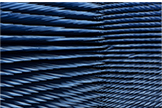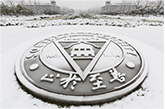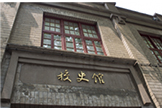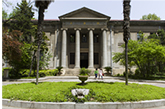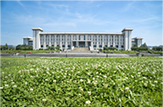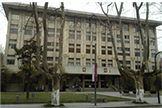[Southeast University News Network, April 18] (Correspondent: Xiong Ren’gen) Recently, the team from Southeast University International Institute of Molecular Ferroelectricity Science and Application & Jiangsu Key Laboratory of “Molecular Ferroelectricity Science and Application” discovered the thermochromic ferroelastic with seven physical channel switches. Related result was published in “Angewandte Chemie International Edition”, the top journal in the field of chemistry, with the title of “The First Chiral Thermochromic Ferroelastic with Seven Physical Channel Switches”. In addition, this paper has been selected as VIP (Very Important Paper). It is reported that only less than 5% of accepted papers can get such a positive evaluation.
In the information age, the signal processing and encryption of electronic intelligent devices are deemed so crucial that multi-functional materials with multiple physical channel and bi-stable switching characteristics are of great significance. It is known to all that a key corresponds to a lock. Assuming we put our assets in the safety box, we’ll get further protection. Similarly, each additional physical channel adds a layer of safeguard. On this basis, we reported the first chiral compound with seven physical channels that can perform seven-layer encryption on the information to make the information safer and more reliable.
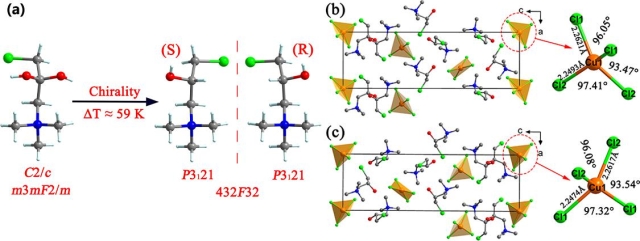
Fig. 1. (a) Disordered CTA cations and chiral ordered S-CTA and R-CTA cations in the racemic crystal structure; (b) (R-CTA) 2CuCl4 and (c) (S-CTA) 2CuCl4 crystal packing diagram.
As early as in1999, Wataru Fujita et al. reported the magnetic bi-stable state in Science (Science1999, 286, 261–262) and observedan obvious magnetic bi-stable loop in the temperature range of 230K to 305K in the 1,3,5-trithia-2,4,6-triazapentalenyl (TTTA) molecules. Its high-temperature phase was represented as a paramagnetic phase and its low-temperature phase featured diamagnetism under the influence of dimerization. Three years later, ME Itkis et al. reported in Science that the bi-stable characteristic of electrical, optical and magnetic physical channels was found in the neutral free radical product of phenalenyl (Science2002, 296, 1443–1445 ). Until 2014, Prof. Xiong Ren’gen’s team reported in Advanced Materials that the imitable periodate (IPI) compound highlighted the bi-stable characteristic in respect of five physical channels including dielectric, piezoelectric, SHG, ferroelectric and electromechanical channels (Adv. Mater. 2014, 26, 4515–4520). It can be seen that each additional physical channel faces huge challenges. Under the guidance of the “ball-like” principle of molecular ferroelectric and the introduction of chirality, we used chiral ligands for synthesis and introduced chiral switches therein, finally achieved (R-CTA)2CuCl4 and (S-CTA)2CuCl4 (CTA =3-Chloro-2-hydroxypropyltrimethylammonium) (Fig. 1). These two compounds highlight the switching characteristics in respect of seven physical channels including dielectric, electrical conductivity, second-order nonlinearity, piezoelectricity, ferroelasticity, chirality and thermochromism. Among others, the thermochromic feature is particularly special, making it distinctive from that of traditional phase change materials. This has provided a new inspiration of spectral encryption for bi-stable switches.

Fig. 2. (a) DSC curve; (b) schematic diagram of multiple bi-stable states such as dielectric, conductance, piezoelectric and second-order nonlinear optics, etc.
The phase-transition points of (Rac-CTA)2CuCl4, (R-CTA)2CuCl4 and (S-CTA)2CuCl4 appear near 361K, 417K and 420K respectively (Fig. 2). With the temperature changes, the dielectric constant, electrical conductivity, piezoelectric coefficient and SHG signal strength of the low-temperature phase below the phase-transition temperature and the high-temperature phase above the phase-transition temperature all indicate two switchable stable states.
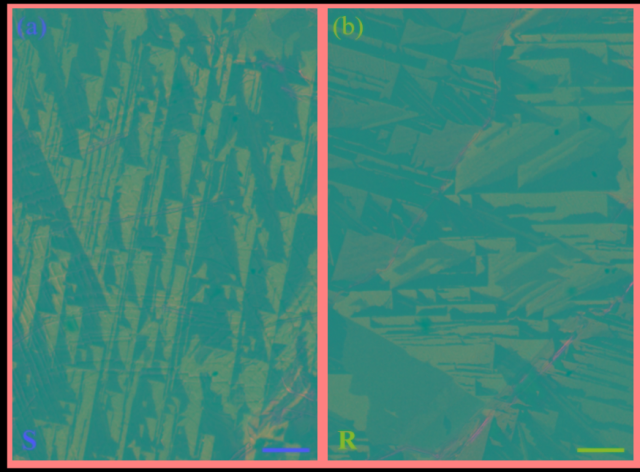
Fig. 3. Ferroelastic domain structure of (S-CTA)2CuCl4 and (R-CTA)2CuCl4 crystals at 293K.
In addition, this chiral compound also features ferroelasticity. The ferroelastic phase transition is often accompanied by the evolution of ferroelastic domains. Under orthogonally polarized lights, the ferroelastic domains with different orientations indicate different birefringence characteristics, thereby showing the structural regions highlighting different shades. The crystalline films of (S-CTA)2CuCl4 and (R-CTA)2CuCl4 showed a clear triangular ferroelastic structure at room temperature. When the temperature is higher than the phase-transition point, the ferroelastic domains disappear quickly, showing extinction with cubic symmetry. In the subsequent cooling, the regular ferroelastic domains appear again quickly, showing obvious switching characteristic.
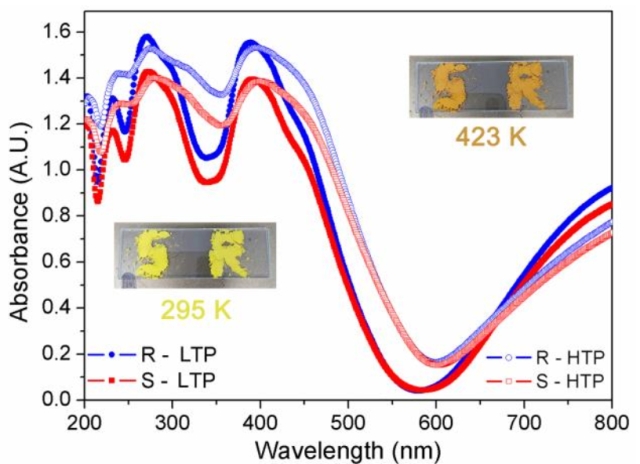
Fig. 4. UV-Visible absorption spectrum of variable-temperature solid
In addition to ferroelasticity, this chiral crystal also exhibits switchable thermochromic property. At room temperature, (R-CTA)2CuCl4 and (S-CTA)2CuCl4 crystals absorb lights below 540 nm, which is consistent with their yellow appearance. When the temperature increases, the absorption edge of the electron absorption band redshifts. When the temperature exceeds the phase-transition point and reaches 423K, the absorption edge moves to 580nm, which is also consistent with the crystal’s change to orange when heated. The adoption of this thermochromic property for specific processing of spectral encryption and signal detection has provided a new insight for developing new encryption technologies.
This achievement was accomplished by the joint efforts of Dr. Lu Siqi (the first author) and others with Southeast University as the first corresponding institute. And this program was supported by the “Cultivation Fund for the Top Ten Science and Technology Issues of Southeast University”.
Paper’s link: https://onlinelibrary.wiley.com/doi/10.1002/anie.202000290
(Editor-in-charge: Wu Hanyu, reviewed by: Song Yechun)







